Inside the making of Xen Orchestra 6
Xen Orchestra 6 is taking shape. From a redesigned UI to deep architectural changes, this new version brings better performance, improved workflows, and modern DevOps integrations, all shaped by community feedback and real-world use cases.
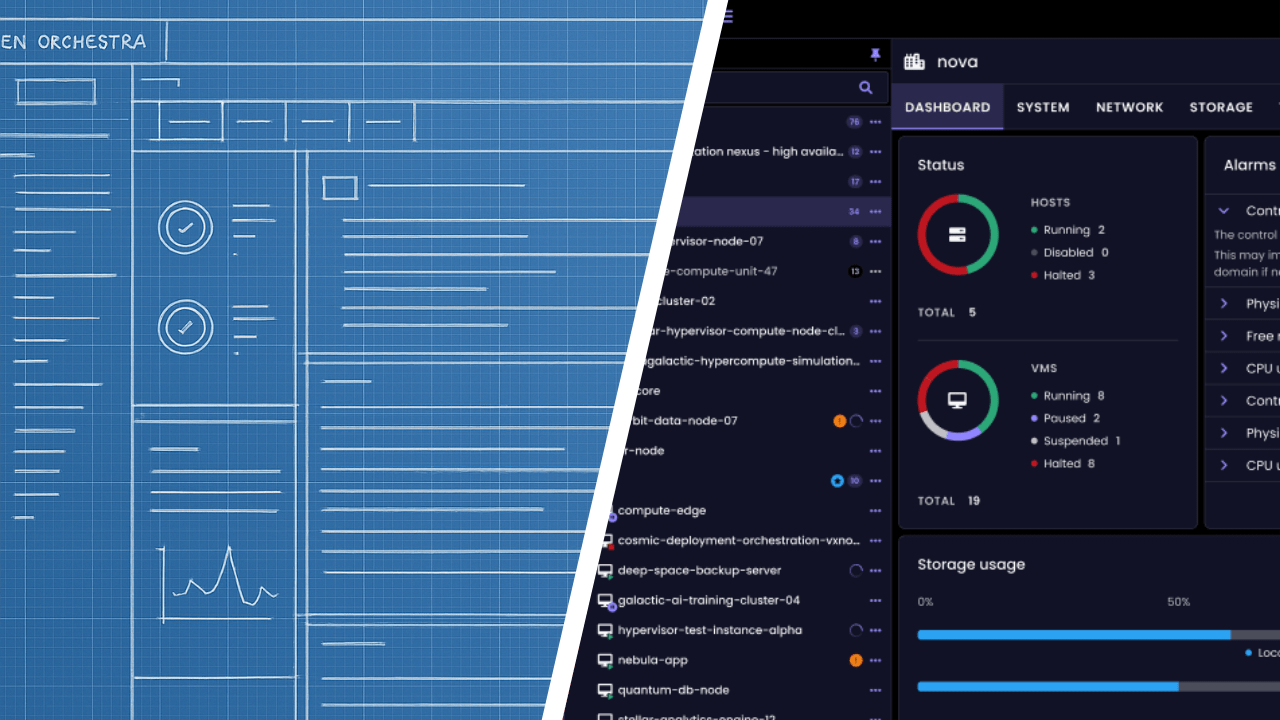
Xen Orchestra 6 is a major step forward for our virtualization stack, not just in how the platform looks, but in how it works and evolves. Over the past few months, we’ve shared early devblogs, collected feedback from our community and customers, and made steady progress on both design and architecture.
In this post, we’re taking a step back to show you where we started, what we’ve achieved so far, and what’s coming next.
Looking back: how we got here
When we started working on Xen Orchestra 6, the goal wasn’t just to give the interface a facelift. Over the years, Xen Orchestra 5 has grown a lot, with more than 100 releases since its initial launch, we added a huge number of new features, often incrementally. We introduced backup improvements, advanced filtering, new views, alerts, monitoring tools… all progressively layered on top of the original design.
While this made XO 5 more powerful, it also made the interface more complex. Some features became harder to find for new users, and the overall structure started to feel cluttered. It was time to step back and rethink everything from the ground up, not just to clean up the UI, but to design something that could fully support the scope of what Xen Orchestra has become.
We also wanted to lift some long-standing limitations, answer recurring requests (as the treeview), improve performance, and build a more scalable, flexible foundation for the future. That’s what led to the XO 6 project!
🛠️ Technical foundation
Back in 2019, we introduced the idea of Xen Orchestra 6 for the first time in a DevBlog. We explained the limitations of the existing stack. Bulk actions were hard to implement, performance was becoming a bottleneck, and many features required UI components that simply didn’t exist yet.
For example, in a 1000 VMs infrastructure (which were coming more and more common even back in 2019, which is another Monday today), the initial load time of Xen Orchestra started to be around 10 seconds, and around 30 MiB to download. XO 6 goal is to reduce that by transferring only what you need. See the "results" section for what we managed to achieve!
This pushed us to rebuild the interface from the ground up using a modern, more maintainable tech stack. XO 6 is now built with Vue.js, which offers better performance, simpler component architecture, and improved developer experience.

📐 Redesigning the experience
Of course, it was not just about technical limitation and we didn’t stop at the codebase. Alongside this effort, we launched a complete UX redesign. From the start, we introduced updated mockups featuring a sidebar with filters, saved searches, and a tree view of the infrastructure. Not just a cosmetic update but instead a major shift in how users would navigate and manage their virtual environment.
We also made sure that Xen Orchestra 6 reflects the way modern IT teams work today. That means better support for DevOps tools and improved interoperability. We’ve introduced a fully documented, Swagger-based REST API that makes it easier to integrate XO into automated workflows, CI/CD pipelines, or external orchestration platforms. Whether you're using Ansible, Terraform, or Pulumi, XO 6 is designed to fit into your tooling.
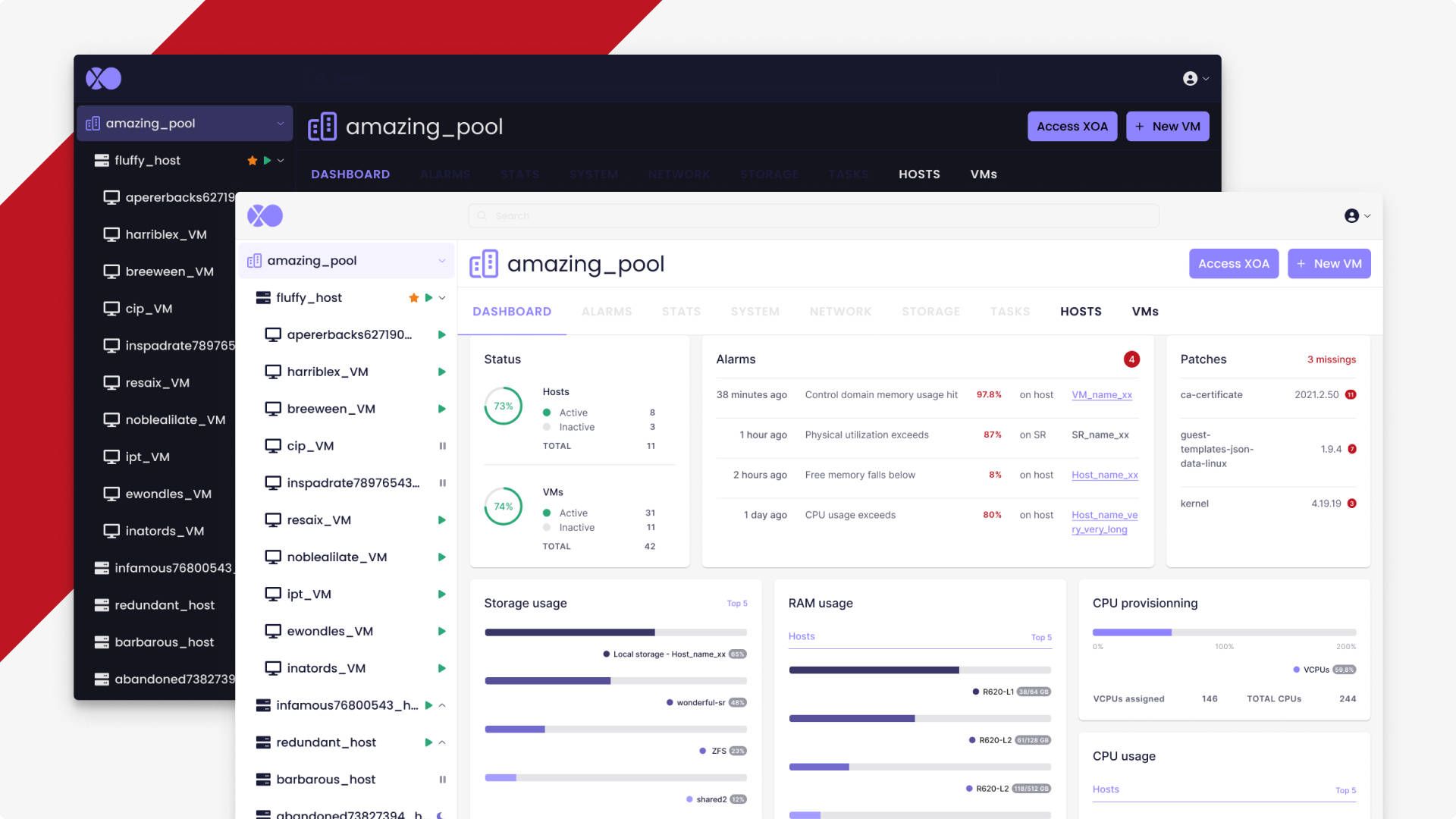
🧪 From concept to prototype
In 2022, we launched XO Lite, a simplified web interface built with Vue.js. This served as a testbed for many of the components and design patterns that would later be used in XO 6. It allowed us to validate our choices before integrating them into the full-scale application.

Shaping XO 6 with your input
To help us prioritize the MVP for Xen Orchestra 6, we recently surveyed both our community and our customers. The goal was to better understand which features are essential from day one, and which ones can come later in the rollout.
Here’s what came out on top:
Most critical features:
- VM lifecycle management
- Host and pool management
- Backup and restore
- Storage management
- Network configuration
These are the core building blocks users expect to have ready in the initial version.
Lower priority (for now):
- RBAC
- API and automation workflows
- DevOps integrations
- External authentication
- Dashboards and performance metrics
These features are still important, but users told us they can wait until the basics are solid.

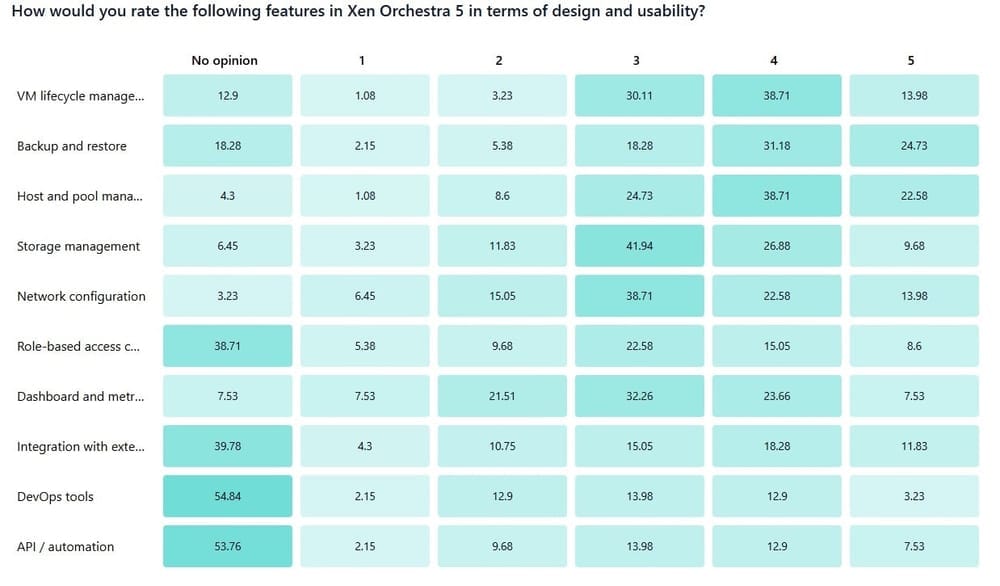
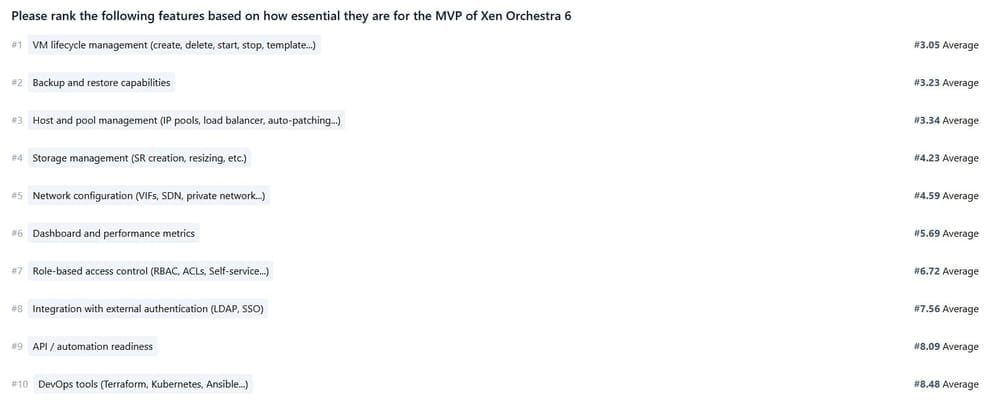
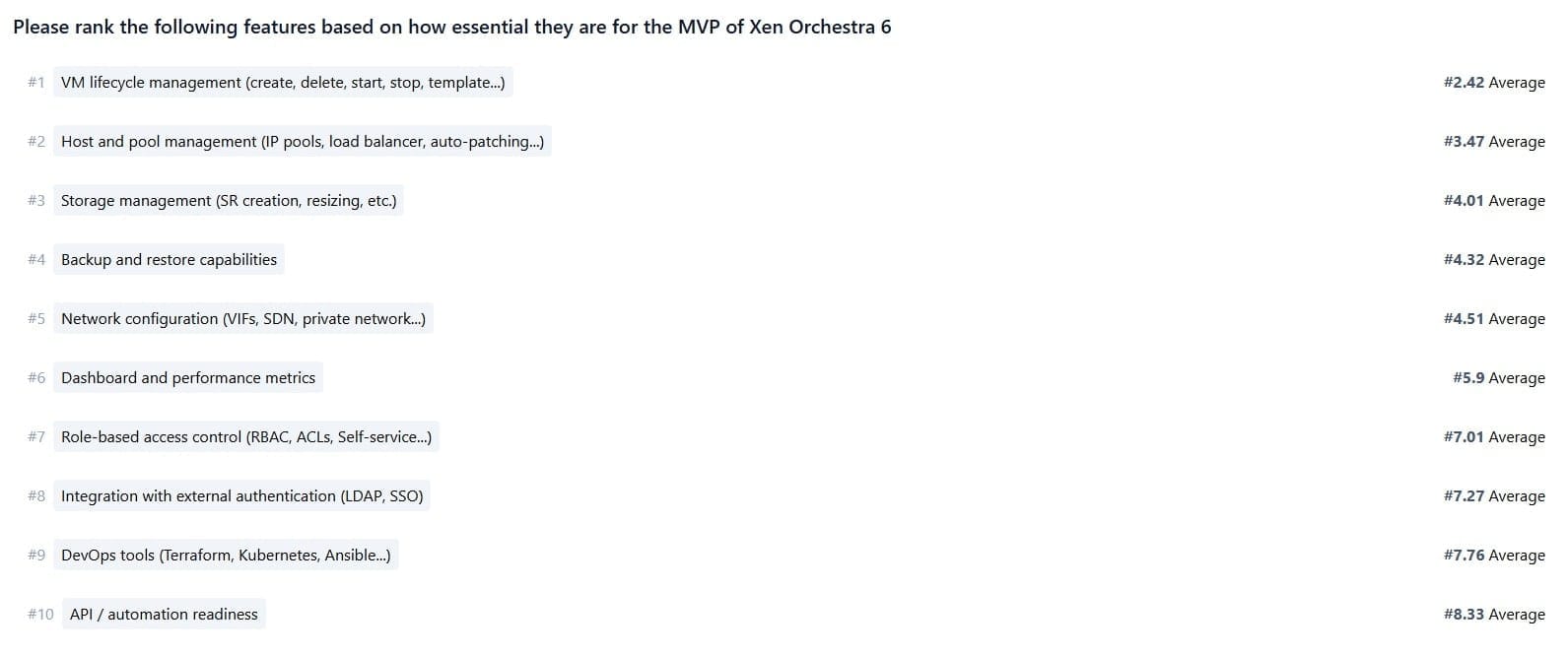
This feedback played a key role in shaping the roadmap. Combined with our current development progress, technical constraints, and planning decisions, it helped us define what’s coming next.
What's on the horizon
Development on Xen Orchestra 6 is ramping up this year, with a clear objective: deliver a modern, more intuitive, better-structured and high-performance interface, while ensuring a smooth transition for current Xen Orchestra 5 users. Here's an overview of what we're working on.
🖥️ Frontend
We’re making steady progress on the XO 6 interface, with a strong focus on read-only views first. This allows users to explore their infrastructure without switching back to XO 5. Several screens are already available in consult mode, and some actions, like creating VMs or networks, can now be performed directly in XO 6.
Current views include global and per-object dashboards (for pools, hosts, VMs…), detailed system tabs, object relationship listings (such as pool-to-host and host-to-VM links), network management, and backup jobs with their corresponding reports.
One of the key additions is the redesigned Tasks view, which brings:
- Clearer distinction between tasks and subtasks
- Visual progress indicators
- More detailed information for better operational tracking
This new approach makes it much easier to follow what’s happening in the platform, especially in large or busy environments.
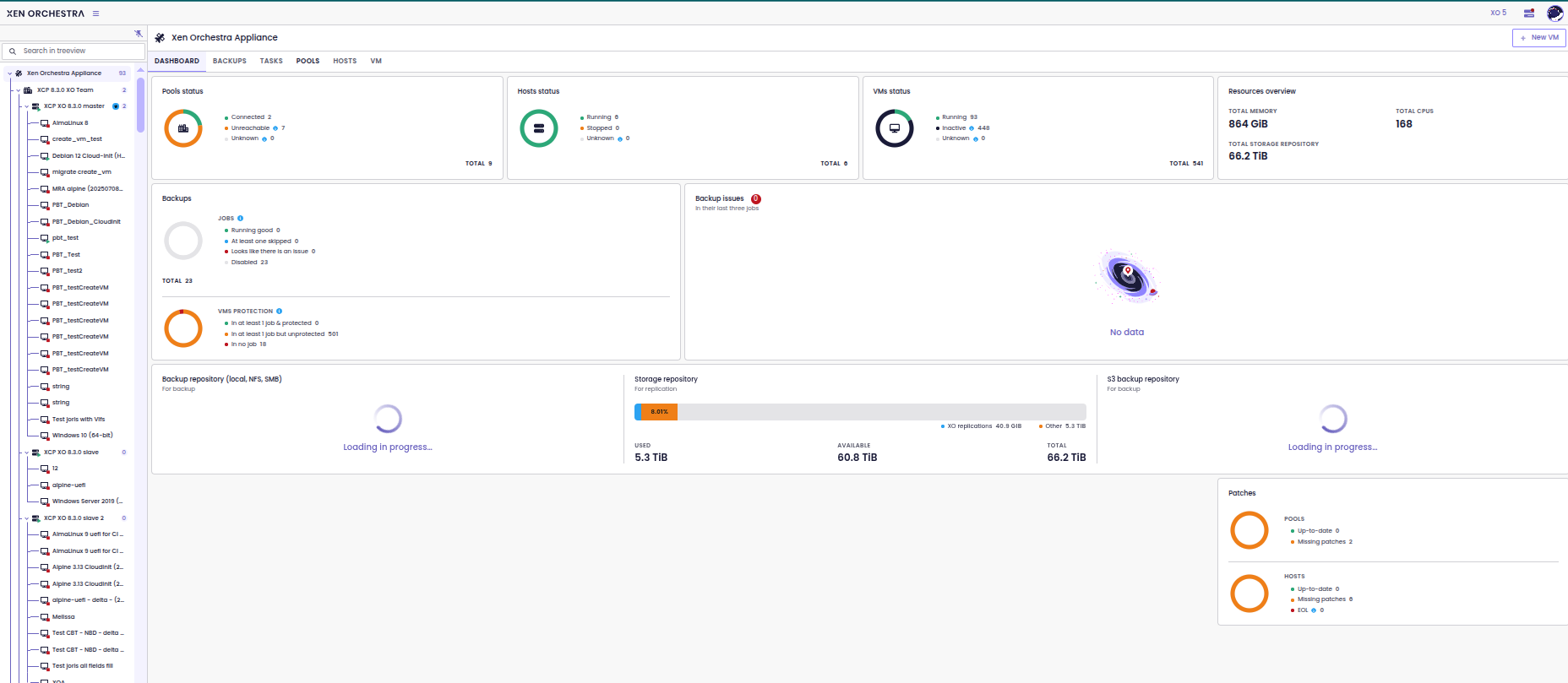
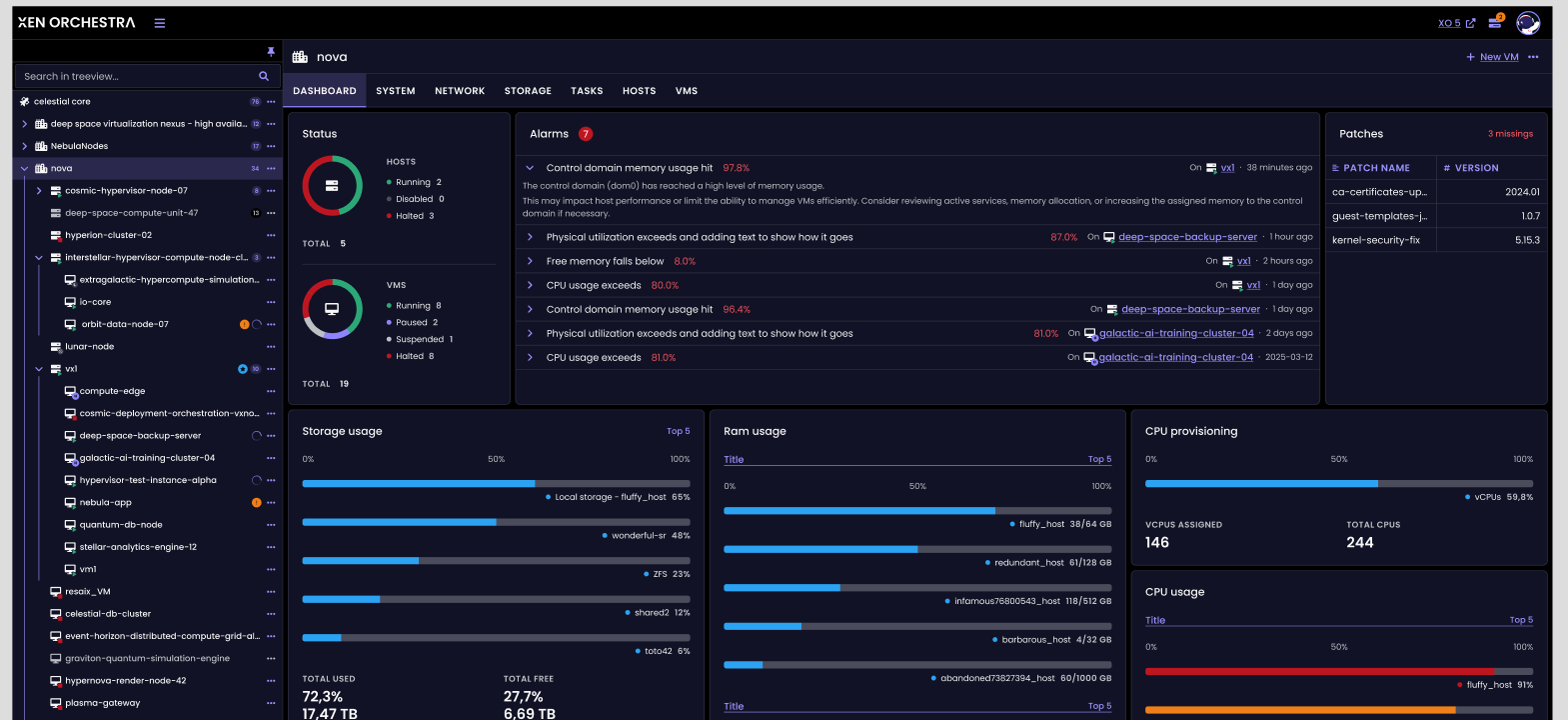
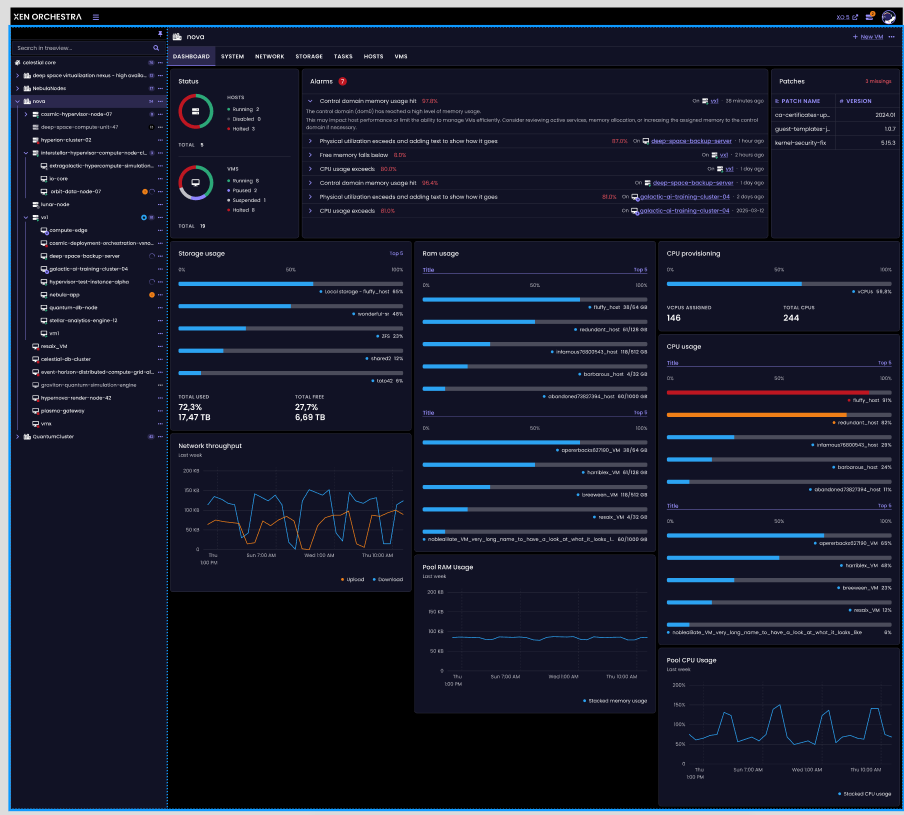
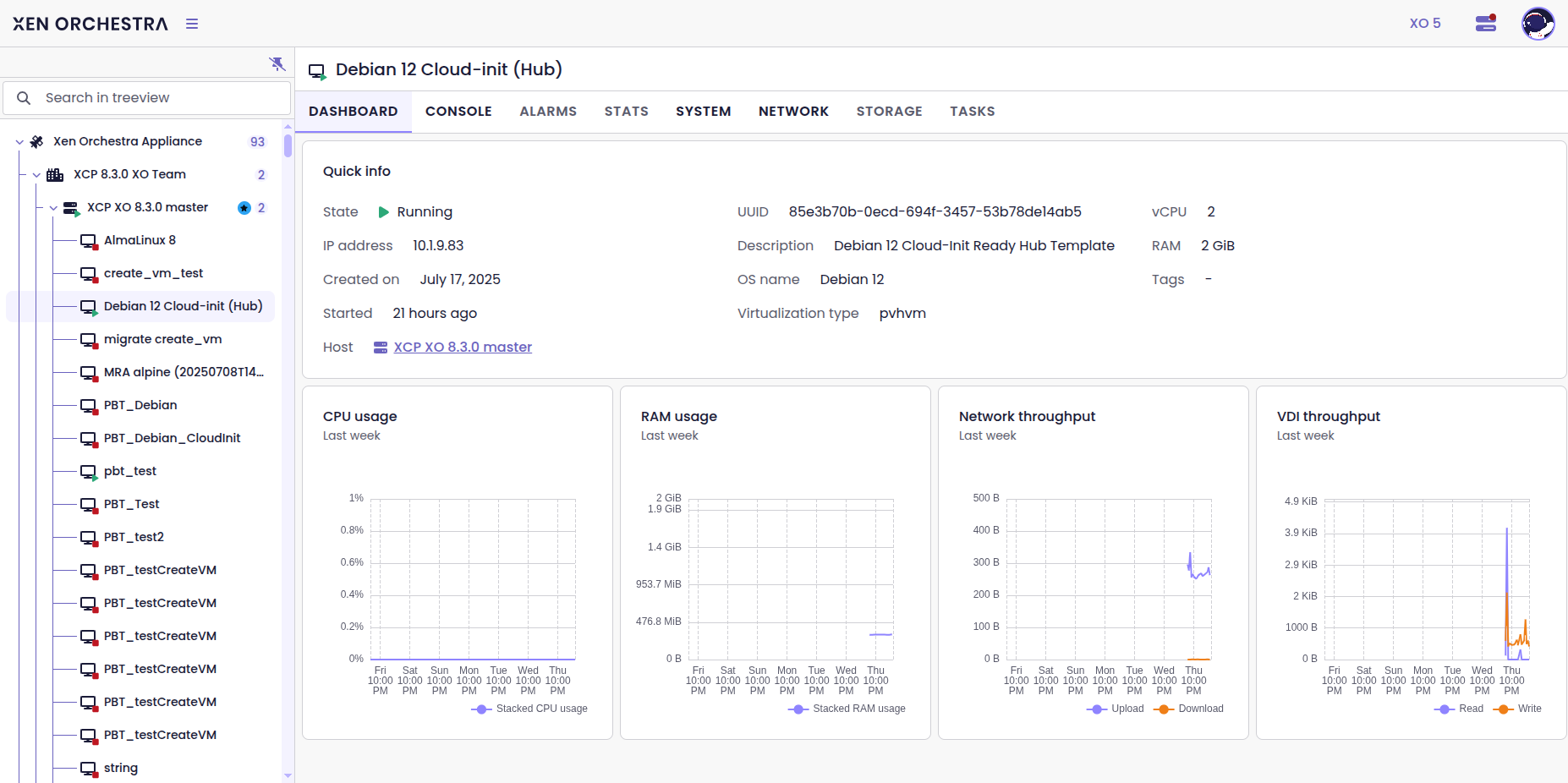
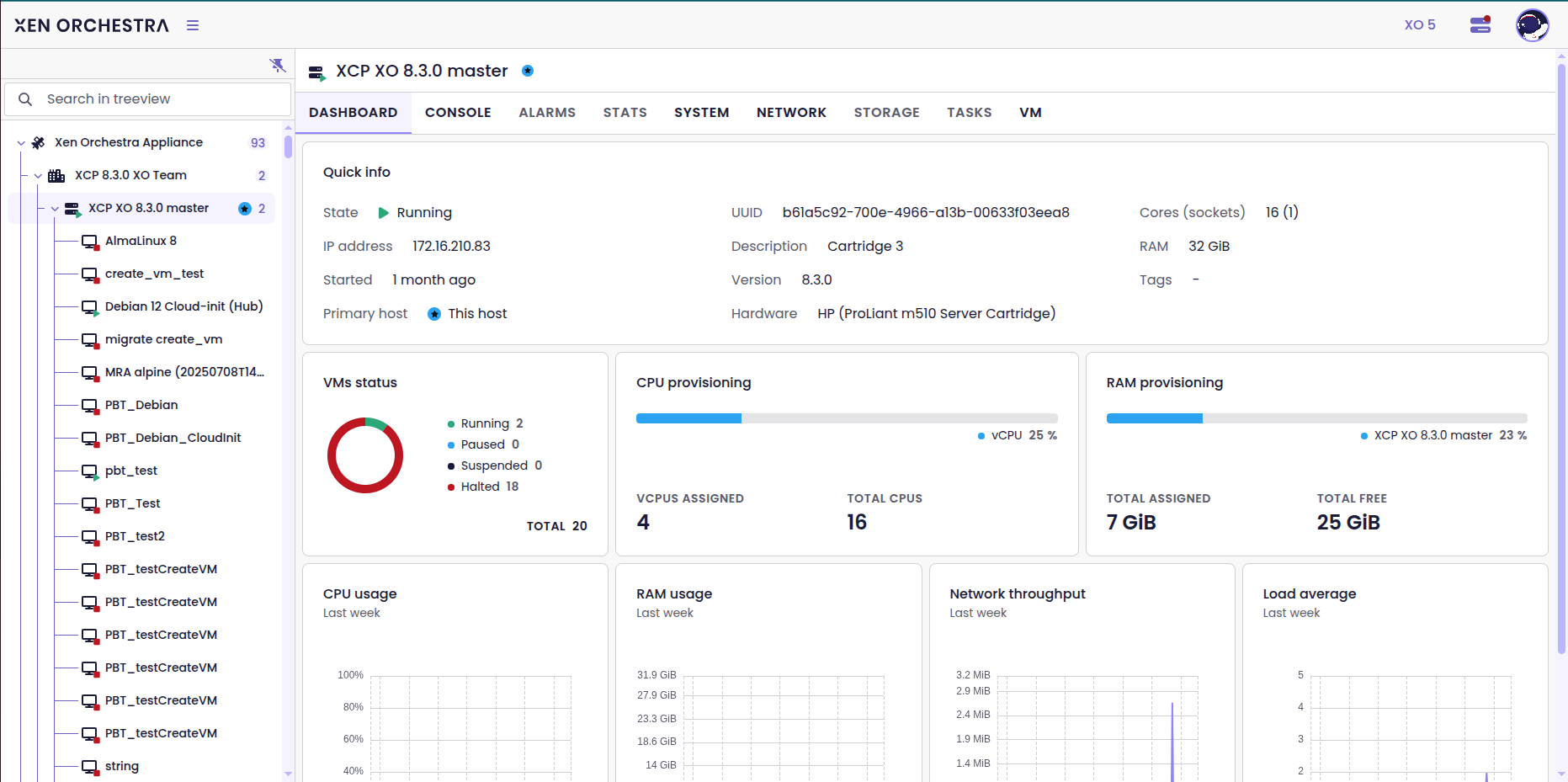
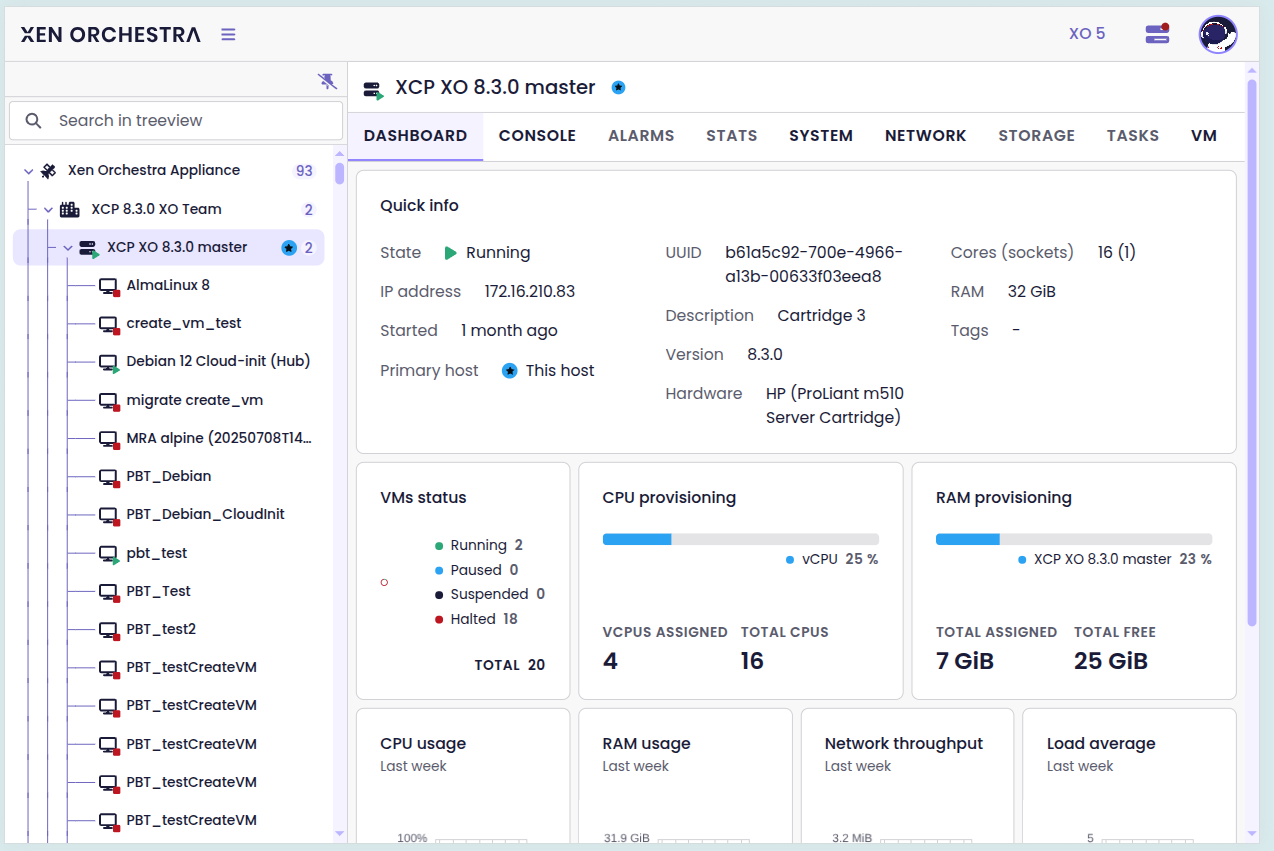
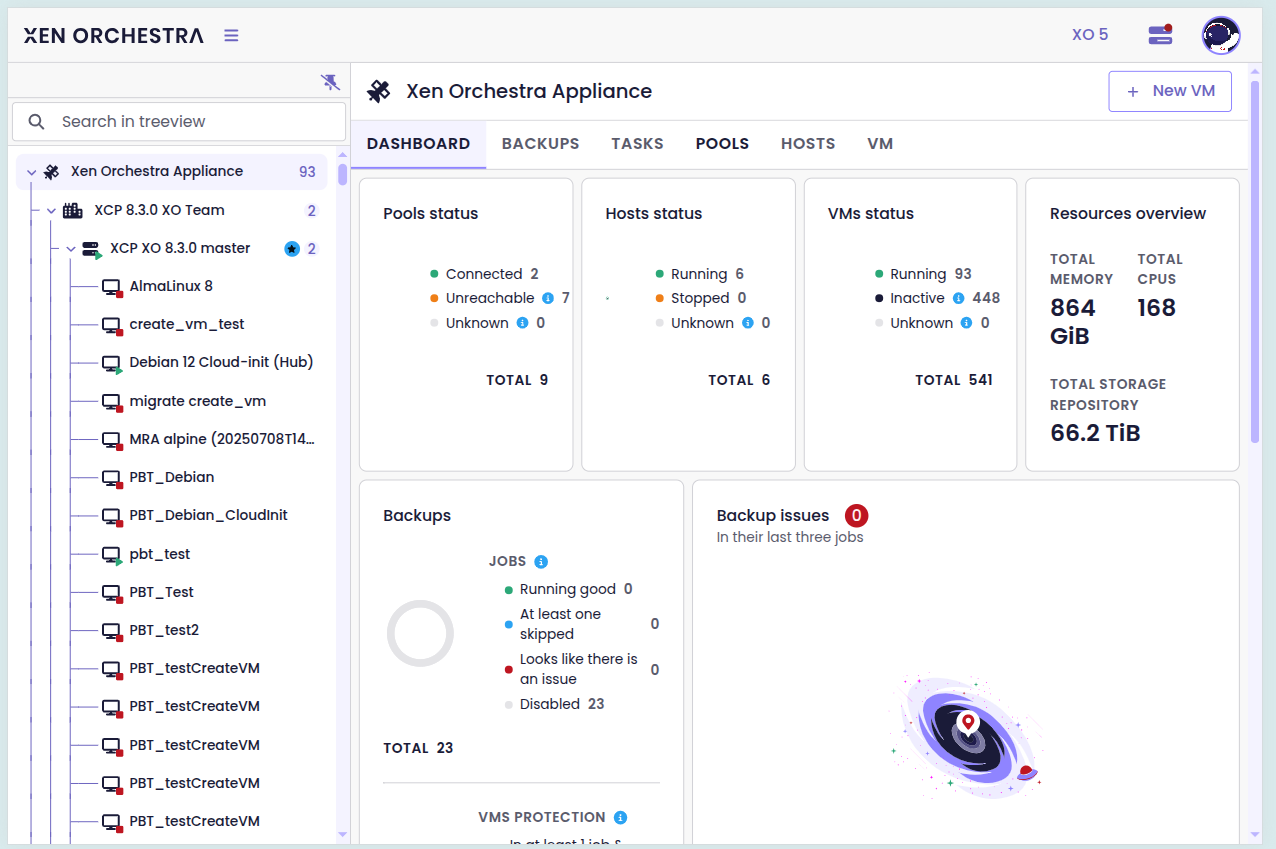
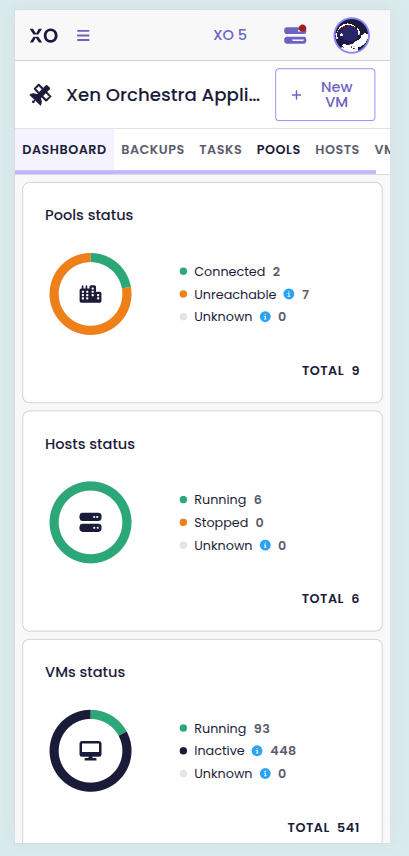
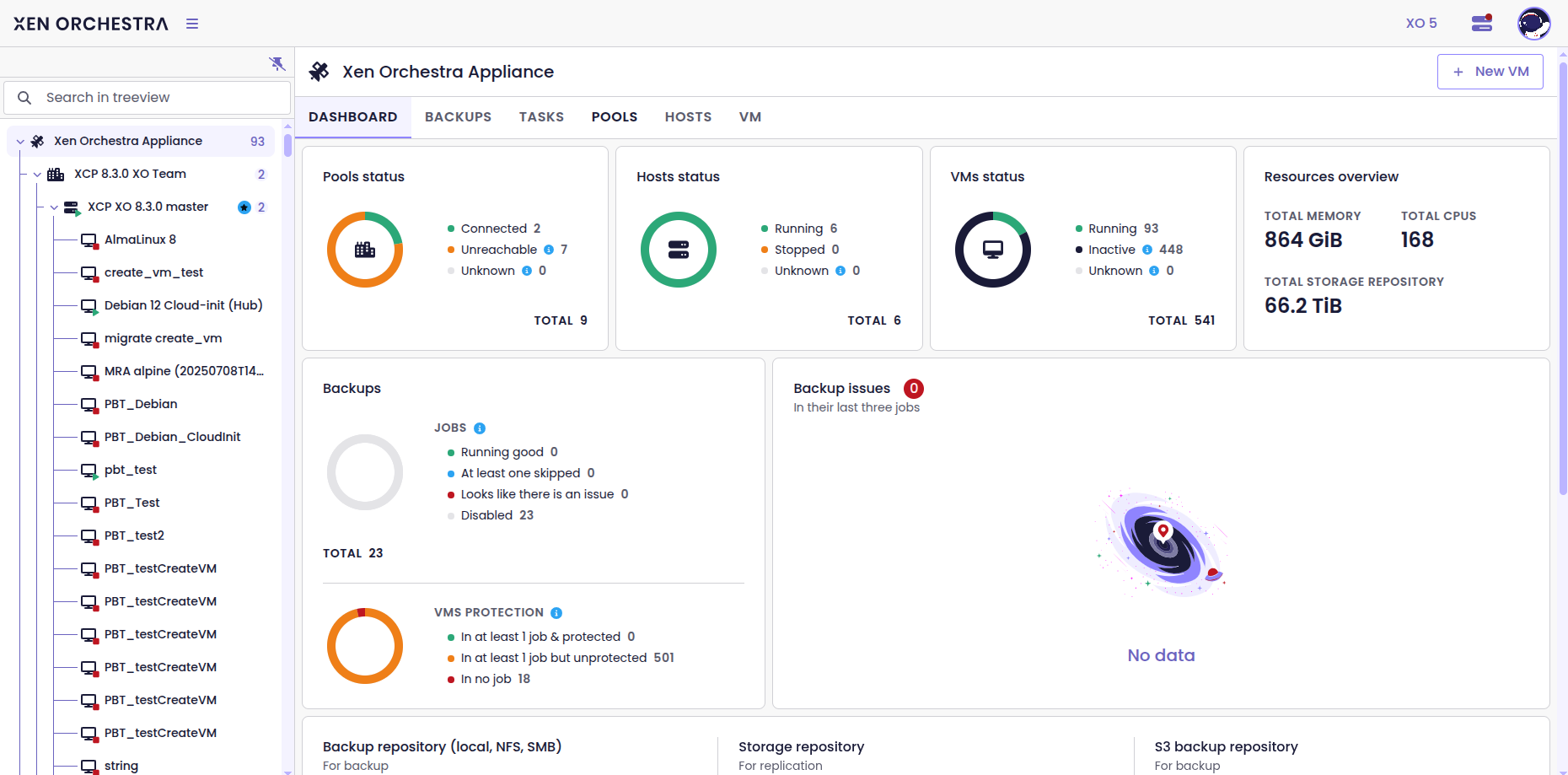
⚙️ Backend
On the backend side, several foundational improvements are underway:
- Migrating the first-gen REST API endpoints to the new REST architecture
- Enhancements and fixes to backup management
- Support for VMware to Xen Orchestra migration
- QCOW2 support, including disks over 2TiB for V2V (VMware to Vates)
Improved task engine, for better reliability and monitoring of background operations
🚀 Key Features Coming Soon
Xen Orchestra 6 marks a significant evolution of the platform. Beyond the new interface, it includes deep work on core features, architectural improvements, and long-term planning. We're using this opportunity to rethink how things work under the hood, modernize key systems, and improve both the user experience and the development process itself. Many of these changes are already in progress and will continue to roll out over the coming months.
First, we’ve started a complete overhaul of the ACL system. This is a strategic project that begins with a deep analysis of how permissions are currently used, followed by a full redesign, both functionally and technically, before implementing it across the frontend and backend. The goal is to make permission management simpler, more flexible, and better suited to modern use cases.
At the same time, we’re continuing the progressive rollout of core management features in XO 6. VM creation and editing, power operations, backup configuration, and more are being added gradually. This phased approach ensures a smooth transition from XO 5, with a full replacement target by 2026.
We’re also working on several under-the-hood improvements. These include a more robust task engine with better tracking and error reporting, ongoing work on VMware migration tooling (V2V), and refinements to the backup workflow, especially for large-scale infrastructures.
Finally, we’re improving our release process, with the aim of delivering security updates more quickly and reliably across all supported versions.
First results
Our reference architecture, containing 1000 VMs in 20 pools with 40 hosts, is now giving great results. Obviously, only large(r) infrastructure will show case the difference, but as we have bigger and bigger deployments all around the world (10,000 VMs+), it's night and day for some users.
🤝 Partnerships
As part of our effort to expand the value of Xen Orchestra, we’re introducing native integrations with third-party tools and we are starting with two solutions from our partner EasyVirt: DC Scope and DC NetScope.
- DC Scope is an analysis and optimization platform that helps administrators better understand how their virtual infrastructure is used. It identifies over- and under-provisioned resources, tracks performance trends over time, and provides actionable insights to improve efficiency and reduce waste.
- DC NetScope focuses on the network side of your infrastructure. It offers advanced traffic analysis between VMs and hosts, helping you understand internal communication patterns and uncover misconfigurations or bottlenecks that can impact performance.
Both tools will be integrated directly into Xen Orchestra:
- You’ll be able to deploy DC Scope and DC NetScope from within the XO interface
- Access to their dashboards and reports will be embedded into the XO user experience
- Data correlation between XO and EasyVirt tools will provide unified, actionable insights for infrastructure and network optimization
This integration is designed to be seamless, with no extra complexity for users. It’s the first step in turning Xen Orchestra into a centralized platform for managing, analyzing, and optimizing your virtualization stack.
🔮 Longer-Term Projects
Beyond the upcoming features, we’re also laying the groundwork for deeper structural improvements that will shape the future of Xen Orchestra.
One key initiative is the gradual deprecation of the JSON-RPC API, which will be replaced by our more modern and robust REST-based architecture. This shift will make integrations easier, improve API clarity, and align with industry standards.
We're also exploring the introduction of a dedicated database layer within XO. This would open the door to more advanced features, including historical data tracking, richer filtering capabilities, and improved scalability for large-scale environments.
Finally, we’ve started internal discussions around improving our QA process. The goal is to increase test coverage and automation to speed up development cycles, reduce regressions, and raise overall software reliability as the platform continues to grow.




